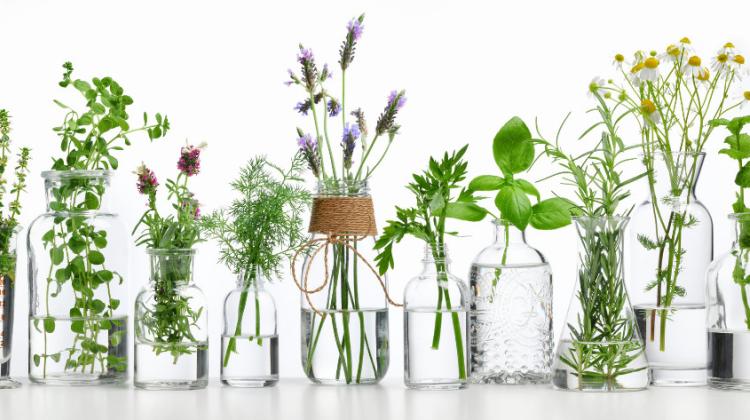Expert: Herbal medicine works as a supportive therapy
 Photo: Fotolia
Photo: Fotolia
Herbalism is best used as a therapy supporting treatment with synthetic drugs - explains Prof. Ewa Osińska from SGGW-WULS. While common cold can be treated with herbal infusions, chemical drugs are needed in more serious illnesses. Herbs can support this therapy, strengthening the effects of medication or alleviating side effects.
"Plant medicine is also a medicine" - noted Prof. Osińska from the Department of Vegetable and Medicinal Plants, Faculty of Horticulture, Biotechnology and Landscape Architecture, SGGW-WULS, quoted in a release on the university website. An interview is needed before using herbs. Sometimes a herb that positively affects one organ can harm another - that can happen when a patient suffers from many ailments or illnesses".
In phytotherapy - as herbalism is often called - the key is systematic approach. "If we drink a glass of lemon balm, we can feel calm, but the long-term effect that will bring about a significant change in health will only be achieved after 2-3 weeks of regular use" - explained the expert.
Two types of compounds are behind the beneficial effects of herbs: the basic carbohydrates, fats and proteins that we consume on a daily basis - and secondary metabolites. "The latter group includes organic compounds contained in herbs that are not essential for the growth and development of the plant, but play a significant role in its functioning, including protection against pathogens, herbivores and UV radiation" - explained Prof. Osińska. These compounds are used in herbal medicine and as ingredients in plant medicines.
Some secondary metabolites are beneficial to the whole organism and some to a particular organ or system. In the past, information about what plants to use for specific ailments was derived from practice - today, however, science can also help in this. Researchers carry out analyses in which they determine which compounds are present in individual herbs. On this basis, raw materials for the production of plant medicines or herbal therapies are obtained.
Parts of plants, in which the content of biologically active compounds is the highest, are herbal raw materials. It can be the whole plant (such as nettle) or its individual organs: inflorescence, (marigold), root (valerian), rhizome with roots (lovage), leaves (basil), fruit (hawthorn) or bark (oak). Sometimes an extract is used - the whole complex of substances contained in plants, which allows different groups of compounds to interact - and sometimes only one isolated group or a single compound.
The conditions in which herbs grow have a great influence on the content of active compounds. Research on the development of plants in situ (natural conditions) and ex situ (conditions controlled by humans) showed that even if the plants were grown in the same environment, they contained different amounts of compounds - it depended on the conditions. Among medicinal plants in Poland there are so-called chemical breeds - raw materials from the same species may have different amounts of compounds depending on the region of origin. For example, essential oil found in common yarrow in some parts of Poland contains little azulene, and much more in others.
Therefore, as stressed in the WULS-SGGW press release, attention should be paid to the origin of raw materials from which we make infusions, lotions, and which we add to dishes. Herbs found in urban parks and by the roads are likely to be contaminated. Those from the forest are not completely safe either - you need to know whether chemical spraying has not been carried out. Areas with no big industry are rather, for example north-east of Poland.
Prof. Osińska assured that herbs sold in pots in supermarkets must be checked and safe. "They are healthy, but their shelf life is short - they are usually grown hydroponically, not on soil. Thanks to this they grow faster and growing them is easy, but there are disadvantages: fertilizers rich in nutrients accelerate growth, but also make the plants finish vegetation quickly".
"It is definitely more effective to plant, for example, basil seeds yourself, in a pot. It\'s better not to keep it on the balcony, but it will certainly be safe on the window sill" - added the researcher.
Dried herbs are also healthy, but only if drying has been done under appropriate conditions. "Drying involves the removal of water, stopping the enzymatic degradation of the compounds, halting the degradation enzymes. The raw material obtained is fully valuable, although there is little loss in vitamins during the drying process" - explained Prof. Osińska.
Herbal teas do not have any additives. Such infusion is simply finely crumbled raw material - although every crumbling results in a loss of some active compounds. This product meets the required standards - the only difference is that the penetration of water through the bag weakens the taste of the infusion.
Growing demand for herbs, related to the healthy eating trend, means that plants that have so far been harvested only from the natural state are now being introduced as crops - for example nettle and St. John\'s wort. However, the phytochemical industry needs good quality raw materials - which can be guaranteed by equal cultivation conditions.
Enter horticultural specialists, who cooperate with industry. The scientists from the Department of Vegetable and Medicinal Plants at WULS-SGGW deal with the introduction of wild species into cultivation: they develop the agricultural assumptions that allow this process to be carried out for individual species. According to the instructions of WULS-SGGW employees, a nettle plantation in Wizna has been established, and the owner of the company Dar Natury has developed a technology of growing southern sweet-grass as part of his doctorate at the university in Warsaw.
PAP - Science and Scholarship in Poland
kflo/ agt/ kap/
tr. RL
Przed dodaniem komentarza prosimy o zapoznanie z Regulaminem forum serwisu Nauka w Polsce.















